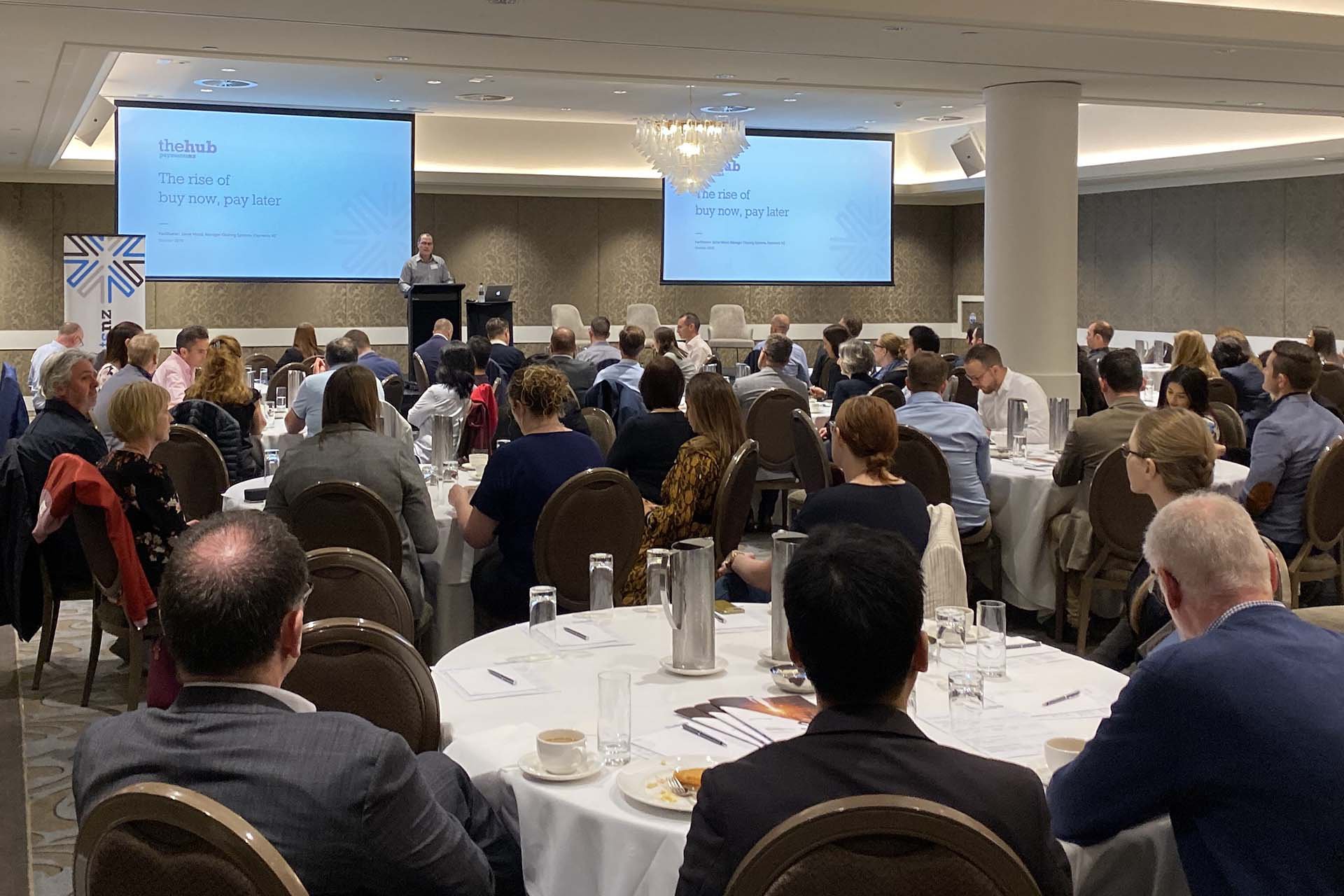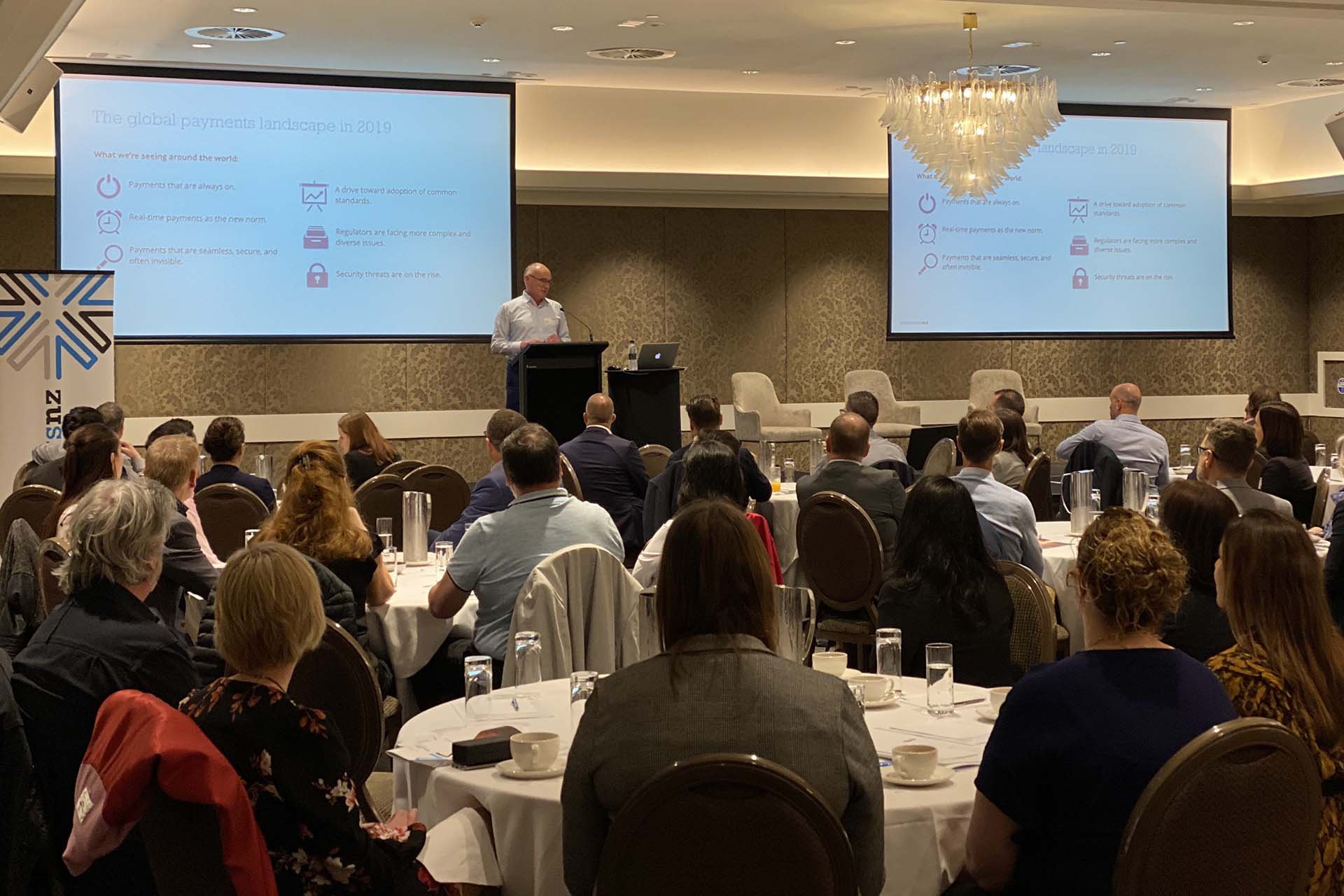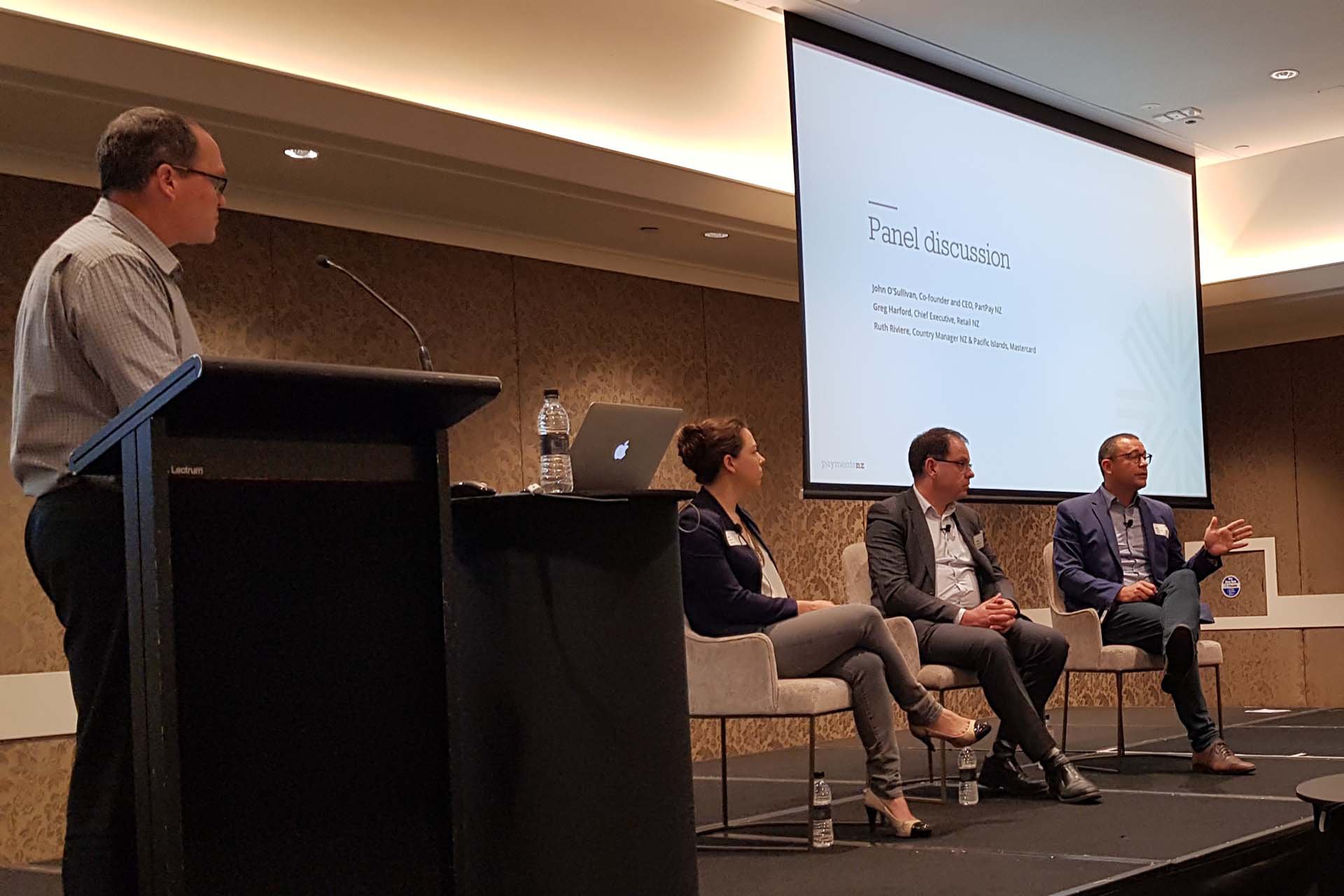The rise of buy now, pay later
8 Nov 2019
The Hub October 2019
Last week we held The Hub in Wellington and Auckland where we explored the topic of buy now, pay later services. The topic and event were very popular with 200 attendees joining us across both locations.
Our Chief Executive, Steve Wiggins, kicked off the breakfast sessions with an update about our work programme. This was followed by a panel discussion on the rise of buy now, pay later facilitated by our Manager Clearing Systems, Jamie Wood.
Payments NZ update
In his company update, Steve talked about the findings from our recently published 2019 Environmental Scan report, summarising the global trends and developments we’re seeing in payments. He spoke of the global push towards the adoption of common standards, and that regulators worldwide are facing increasingly more complex and diverse issues such as rising security threats.
Steve outlined what we’re currently focusing on with the industry, including challenges and opportunities along the way. He gave an update about the API Centre since its launch and our API standards development timeline. He then spoke about Payments Direction and how the team is now looking at what New Zealand’s payments system could look like in 2030. He also outlined the clearing system initiatives being worked on this year which includes looking at what ISO 20022 means for our High Value Clearing System and industry-based fraud reporting.
At the conclusion of Steve’s presentation, the scene was set for the panel discussion with figures about how many Kiwis are now using buy now, pay later (BNPL) services. A recent NZ Post report revealed that around 228,000 Kiwis are signed up to use BNPL services, and the numbers skew around 70% female. 80% of users are under 45, with clothing and footwear at the top of the list of purchases.
Panel discussion: The rise of buy now, pay later
Jamie introduced our panellists, who were: John O’Sullivan, co-founder and CEO of PartPay, Greg Harford, CEO of Retail NZ, and Ruth Riviere, Country Manager NZ & Pacific Islands, Mastercard (Auckland panel) and Matt Cavin, Director Product and Strategy, Mastercard (Wellington panel).
Our panellists spoke about the growing scepticism among millennials and younger generations over traditional forms of finance. Globally, merchants and retailers are beginning to see the impact of their popularity, especially on traditional credit products.
BNPL is seen as the financial service for consumers who don’t think they need credit, but still do. Ruth from Mastercard said the appeal for many consumers is that BNPL is more closely linked with debit, so they still feel like they’re spending their own money.
The real test for BNPL is if it can extend beyond smaller products like fashion and clothing into bigger ticket purchases such as houses. This method of payment is already being used for things like whiteware, furniture and healthcare services, so it may only be a question of time.
John from PartPay said BNPL was “the smarter way to pay”. Consumers are engaging with a platform that has transparent fees, and they’re reminded before every payment is taken out of their account. This is a way to minimise the risk of late payment fees, which are capped anyway.
Ruth said BNPL was more about short-term cashflow management. It’s a new way of thinking about credit. John agreed with this assessment, saying millennials generally have less debt than previous generations, smoke less and drink less. For that generation (and younger), BNPL is a very short-term cashflow solution, giving them the ability to spread out payments into manageable interest-free amounts.
Real innovation and drive
Greg from Retail NZ spoke from a retailer’s perspective, saying the best way to engage with customers is to offer a broad range of ways to pay. Retailers are very customer-led and will offer a financial product if customers show they like it. The big challenge for them is the cost of BNPL.
New Zealand and Australia are the hubs of BNPL solutions, said John. A lot of the innovation and drive are coming out of these markets. For example, BNPL services decided not to charge consumers fees because customers don’t like them. He said there are bigger opportunities that lie ahead, including when the product moves into business-to-business and small-to-medium enterprises.
As to the future, Ruth said the big question now is around what happens to the generation who’s grown up using these services. What role will the banks play for this generation? Especially as their purchase amounts get bigger and bigger. Currently BNPL and traditional credit co-exist, as there are things you can do on a credit card that you can’t using BNPL. There is also room for these products to partner with challenger banks.
John spoke about being excited over open banking, but it needs to move along a bit more. PartPay is already built from APIs, but there are opportunities that lie within open banking to use these services not just as a means of payment, but another layer of authentication.
The panel concluded by saying competition is what drives innovation. The life events that trigger the use of a credit card are getting pushed out, and credit is being less widely used. So perhaps then, BNPL offers the industry the opportunity to reimagine and re-educate consumers about the credit proposition.
Thank you to all our panellists who took part in the discussion and to everyone who joined us at both events.


